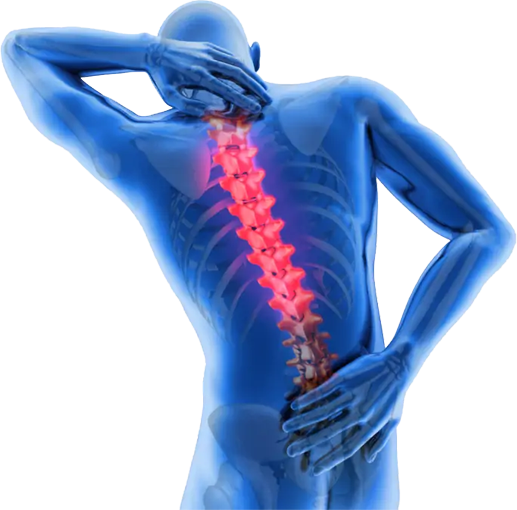Pain Management
Effective pain management improves quality of life by reducing discomfort through medication, therapy, and lifestyle adjustments.
What Types of Pain We Can Help Relieve
There are several types of pain, and each requires a different approach to pain management and pain management supplements. Neuropathic pain is the result of damage or disease affecting the nervous system, for example. Complex regional pain syndrome (CRPS) is a type of chronic pain that affects one limb, such as an arm, leg, hand, or foot. Diabetic neuropathy is a type of nerve damage associated with diabetes.
Since everyone is unique, and there are so many types of pain, each person can experience pain – and relief from pain – in his or her own way. In many cases, standard therapies often provide inadequate pain relief when dosages are too low, or when a health condition makes it hard to swallow or keep down pills. Standard therapies can also expose patients to a number of uncomfortable or even dangerous side effects when dosages are too high or when taken in wrong combinations with other medicines.
Compounding pharmacies can help by creating compounded pain medications in exact dosages, in the right combinations, and available in customized delivery systems. The exact dosages help patients get the right amount of medication for complete pain relief and the lowest possible risk of side effects.
Compounded medicines using customized delivery systems help patients get the most medication possible. Transdermal pain cream compounding delivers analgesics through the skin, for example, which allows for smooth, continuous drug delivery and pain relief. Transdermal treatments also bypass the digestive tract to speed delivery and reduce stomach upset.
Pain Management Medications
Formulation Compounding Center can utilize several potent pain reducing agents together that work in synergy to help with a variety of pain related conditions such as inflammation, nerve, muscle and joint pain.
- Ketoprofen
- Ibuprofen
- Diclofenac
- Baclofen
- Ketamine
- Lidocaine
- Menthol
- Gabapentin

Specific Pain Management Products:
Muscle
Muscle Mild
Ketoprofen 6%, Baclofen 2%, Guaifenesin 15%, Diclofenac 3%, Menthol 3% Topical Lipodermal Cream
Muscle Moderate
Orphenadrine 5%, Diclofenac Sodium 3%, Cyclobenzaprine HCl 2%, Lidocaine 5% Topical Lipodermal Cream
Muscle Potent
Orphenadrine 5%, Loperamide 5%, Diclofenac Sodium 3%, Cyclobenzaprine HCl 2%, Baclofen 2%, Menthol 3% Topical Lipodermal Cream
Joint
Joint Mild
Diclofenac 5%, Ibuprofen 5%, Menthol 3% Topical Lipodermal Cream
Joint Moderate
Diclofenac 10%, Ibuprofen 5%, Menthol 3%, Lidocaine 5%, Topical Lipodermal Cream
Joint Potent
Orphenadrine 5%, Loperamide 5%, Diclofenac Sodium 5%, Baclofen 2%, Cyclobenzaprine HCl 2%, Menthol 3% Topical Lipodermal Cream
Nerve
Nerve Mild
Diclofenac Sodium 10%, Loperamide 5%, Amitriptyline HCl 2% Topical Lipodermal Cream
Nerve Moderate
Dextromethorphan 5%, Ketoprofen 10%, Loperamide 5%, Amitriptyline HCl 2%, Lidocaine 5%, Topical Lipodermal Cream
Nerve Potent
Dextromethorphan 5%, Loperamide 5%, Diclofenac Sodium 5%, Amitriptyline 2%, Cyclobenzaprine HCl 2%, Guaifenesin 5% Topical Lipodermal Cream
Migraine
Migraine Mild
Lidocaine HCl 2.5%, Bupivicaine 0.2% Nasal Spray
Migraine Moderate
Ketorolac 1.5%, Lidocaine 4%, Bupivicaine 0.2% Nasal Spray
Migraine Potent
Ketamine Nasal Spray



